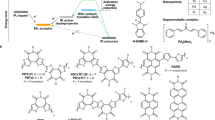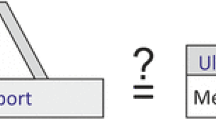Abstract
Transition metals such as Fe in porphyrin complexes are known to bind or react with O2, and such reactions are critical to many biological functions and catalytic oxidation using O2. The transition metals in these reactions often contain valence d electrons, and oxidation of metals is an important step. In recent years, reactions of O2 with d0 transition metal complexes such as Hf(NR2)4 (R = alkyl) have been used to make metal oxide thin films as insulating gate materials in new microelectronic devices. This feature article discusses our recent studies of such reactions and the formation of TiO2 thin films. In contrast to the reactions of many dn complexes where metals are often oxidized, reactions of d0 complexes such as Hf(NMe2)4 and Ta(NMe2)4(SiR3) with O2 usually lead to the oxidation of ligands, forming, e.g., -ONMe2 and -OSiR3 from -NMe2 and -SiR3 ligands, respectively. Mechanistic and theoretical studies of these reactions have revealed pathways in the formation of the metal oxide thin films as microelectronic materials.
Similar content being viewed by others
References
Smith R C, Ma T, Hoilien N, Tsung L Y, Bevan M J, Colombo L, Roberts J, Campbell S A, Gladfelter W L. Chemical vapour deposition of the oxides of titanium, zirconium and hafnium for use as high-k materials in microelectronic devices. A carbon-free precursor for the synthesis of hafnium dioxide. Adv Mater Opt Electron, 2000, 10: 105–114
Flynn L J. Intel announces new chip for small computers. The New York Times, 2008, March 3
Feig A L, Lippard S J. Reactions of non-heme iron(II) centers with dioxygen in biology and chemistry. Chem Rev, 1994, 94: 759–805
Klotz I M, Kurtz D M. Metal-dioxygen complexes: A perspective. Chem Rev, 1994, 94: 567–568
Theopold K H, Reinaud O M, Blanchard S, Leelasubeharoen S, Hess A, Thyagarajan S. Toward benign synthesis via catalytic oxidations using dioxygen or nitrous oxide. ACS Symp Ser, 2002, 823: 75–85
Labinger J A, Hart D W, Seibert W E, Schwartz J. Electrophilic cleavage of the carbon-zirconium(IV) bond. Comparison and contrast with other transition metal alkyl systems. J Am Chem Soc, 1975, 97: 3851–3852
Blackburn T F, Labinger J A, Schwartz J. Hydrozirconation. IV. Oxidation of alkylzirconium(IV) complexes to alcohols. Tetrahedron Lett, 1975, 16: 3041–3044
Lubben T V, Wolczanski P T. Reactivity of dioxygen with group 4A alkoxy alkyls: epoxidation via metal alkyl mediated oxygen atom transfer. J Am Chem Soc, 1985, 107: 701–703
Tilley T D. Trimethylsilyl derivatives of bis(cyclopentadienyl)zirconium and -hafnium. Crystal structure of (η 5-C5H5)2Zr(SiMe3)(S2-CNEt2). Organometallics 1985, 4: 1452–1457
Woods J B, Beach D B, Nygren C L, Xue Z -L. CVD of titanium oxide thin films from the reaction of tetrakis(dimethylamido)titanium with oxygen. Chem Vapor Deposition 2005, 11: 289–291
Wang R, Zhang X H, Chen S J, Yu X, Wang C S, Beach D B, Wu Y D, Xue Z L. Reactions of d0 group 4 amides with dioxygen. Preparation of unusual oxo aminoxy complexes and theoretical studies of their formation. J Am Chem Soc, 2005, 127: 5204–5211
Chen S J, Zhang X H, Yu X, Qiu H, Yap G P A, Guzei I A, Lin Z, Wu Y D, Xue Z L. Reaction of Ta(NMe2)5 with O2: Formation of aminoxy and unusual (aminomethyl)amide oxo complexes and theoretical studies of the mechanistic pathways. J Am Chem Soc, 2007, 129: 14408–14421
Qiu H, Chen S J, Wang C S, Wu Y D, Guzei I A, Chen X-T, Xue Z L. Synthesis and characterization of siloxy, aminoxy, and oxo complexes from the reaction of a tantalum amide silyl complex with oxygen. Inorg Chem, 2009, 48: 3073–3079
Wu Z, Cai H, Yu X, Blanton J R, Diminnie J B, Pan H J, Xue Z. Synthesis of tantalum(V) amido silyl complexes and the unexpected formation of (Me2N)3Ta(η 2-ONMe2)[OSi(SiMe3)3] from the reaction of (Me2N)4Ta[Si(SiMe3)3] with O2. Organometallics, 2002, 21: 3973–3978
Chen T, Wu Z, Li L, Sorasaenee K R, Diminnie J B, Pan H, Guzei I A, Rheingold A L, Xue Z. Direct observation of an equilibrium between (ButCH2)2W(≡CBut)(SiButPh2) and (ButCH2)W(=CHBut)2(SiButPh2) and an unusual silyl migration. J Am Chem Soc, 1998, 120: 13519–13520
Chen T, Zhang X H, Wang C, Chen S, Wu Z, Li L, Sorasaenee K R, Diminnie J B, Pan H, Guzei I A, Rheingold A L, Wu Y D, Xue Z. A tungsten silyl alkylidyne complex and its bis(alkylidene) tautomer. Their interconversion and an unusual silyl migration in their reaction with dioxygen. Organometallics, 2005, 24: 1214–1224
Wagner C D, Riggs W M, Davis L E, Moulder J F. Handbook of X-ray Photoelectron Spectroscopy.Minnesota: Perkin-Elmer Corporation, 1979
N. N. Greenwood, A. Earnshaw, Chemistry of the Elements; 2nd ed.; Oxford: Butterworth Heinemann, 1997. 959
Chisholm M H, Hammond C E, Huffman J C. Tetrakisdimethylamidozirconium and its dimethylamido lithium adduct: Structures of [Zr-(NMe2)4]2 and Zr(NMe2)6Li2(thf)2. Polyhedron, 1988, 7: 2515–2520
Harvey J N, Poli R, Smith K M. Understanding the reactivity of transition metal complexes involving multiple spin states. Coord Chem Res, 2003, 238–239, 347–361
Olmstead M M, Power P P, Viggiano M. New class of σ-bonded aliphatic aza-macrocyclic complexes of transition metals: Synthesis and X-ray crystal structures of nitrogen-bridged [(TiN4C12H24)2] and the oxo-bridged species [(N4C12H25)TiOTi(N4C12H25)]. J Am Chem Soc, 1983, 105: 2927–2928
Friedrich S, Gade L H, Edwards A J, McPartlin M. Structures, dynamics, and reactivity of tripodal amido ligands coordinated to TiIV centres. Chem. Ber, 1993, 126: 1797–1805
Lintanf A, Mantoux A, Blanquet E, Djurado E. Elaboration of Ta2O5 thin films using electrostatic spray deposition for microelectronic applications. J Phys Chem C, 2007, 111: 5708–5714
Kuraison T. (Nissan Motor, Japan). MISFETs with improved gate operation capability. Japan Patent 072310881995-08-29
Zhang X H, Chen S J, Cai H, Im H J, Chen T, Yu X, Chen X, Lin Z, Wu Y D, Xue Z L. Unexpected formation of (dimethylaminomethylene) methylamide complexes from the reactions between metal chlorides and lithium dimethylamide. Organometallics 2008, 27: 1338–1341
Tilley T D. In: Patai S, Rappoport Z. eds. The Silicon-Heteroatom Bond. New York: Wiley, 1991. Chapters 9 and 10
Eisen M S. In: Rappoport Z, Apeloig Y. eds. The Chemistry of Organic Silicon Compounds, Vol. 2; New York: Wiley. 1998. Pt. 3, 2037
Xue Z, Li L, Hoyt L K, Diminnie J B, Pollitte J L. Early-transition-metal silyl complexes free from anionic. pi.-Ligands. A new family of alkyl, alkylidene, and alkylidyne compounds. J Am Chem Soc, 1994, 116: 2169–2170
McAlexander L H, Hung M, Li L, Diminnie J B, Xue Z, Yap G P A, Rheingold A L. Alkyl-silyl complexes free of anionic π ligands. Synthesis and characterization of (Me3ECH2)3MSi(SiMe3)3. Organometallics, 1996, 15: 5231–5235
Li L, Diminnie J B, Liu X, Pollitte J L, Xue Z. Synthesis and characterization of (Me3ECH2)2Ta(=CHEMe3)Si(SiMe3)3 (E = C, Si). Kinetic and mechanistic studies of the formation of a silyl alkylidene complex through preferential silane elimination. Organometallics, 1996, 15: 3520–3527
Diminnie J B, Xue Z. Reactions of alkyl alkylidene complexes with silanes. Synthesis and characterization of novel tantalum 1,1-metallasilacyclobutadiene and disilyl-substituted alkylidene complexes. J Am Chem Soc, 1997, 119: 12657–12658
Wu Z, Diminnie J B, Xue Z. Synthesis and X-ray crystal structure of a chlorobis(trimethylsiloxy)zirconium silyl derivative, (Me3SiO)2Zr (SiPh2But)Cl·2THF. Organometallics 1998, 17: 2917–2920
Wu Z, McAlexander L H, Diminnie J B, Xue Z. Reactions of (Me3ECH2)3ZrSi(SiMe3)3 (E = C, Si) with 2,6-dimethylphenyl isocyanide. Preferential isocyanide insertion into Zr-Silyl bonds. Organometallics, 1998, 17: 4853–4860
Wu Z Z, Diminnie J B, Xue Z L. d0 Bis(silyl) complexes free of anionic π-ligands: Syntheses, structures, and a novel exchange between silyl ligands and silyl anions. J Am Chem Soc, 1999, 121: 4300–4301
Yu X H, Cai H, Guzei I A, Xue Z L. Unusual equilibria involving group 4 amides, silyl complexes, and silyl anions via ligand exchange reactions. J Am Chem Soc, 2004, 126: 4472–4473
Qiu H, Cai H, Woods J B, Wu Z, Chen T, Yu X H, Xue Z L. Disilyl complexes of zirconium, hafnium, and tantalum. Their synthesis, characterization, and exchanges with silyl anions. Organometallics, 2005, 24: 4190–4197
Choi S H, Lin Z, Xue Z. Theoretical studies of the ralative stabilities of transition metal alkylidyne (CH3)2M(≡CH)(X) and bis(alkylidene) (CH3)M(≡CH2)2(X). Organometallics, 1999, 18: 5488–5495
Nugent W A, Mayer J M. Metal-Ligand Multiple Bonds. New York: Wiley, 1988
Author information
Authors and Affiliations
Corresponding authors
Additional information
Supported by the U.S. National Science Foundation (CHE-051692), Research Grants Council of Hong Kong, and the British Royal Society Kan Tong Po Visiting Professorship Program.
Rights and permissions
About this article
Cite this article
Chen, S., Zhang, X., Lin, Z. et al. Reactivities of d0 transition metal complexes toward oxygen: Synthetic and mechanistic studies. Sci. China Ser. B-Chem. 52, 1723–1733 (2009). https://doi.org/10.1007/s11426-009-0253-2
Received:
Accepted:
Published:
Issue Date:
DOI: https://doi.org/10.1007/s11426-009-0253-2




